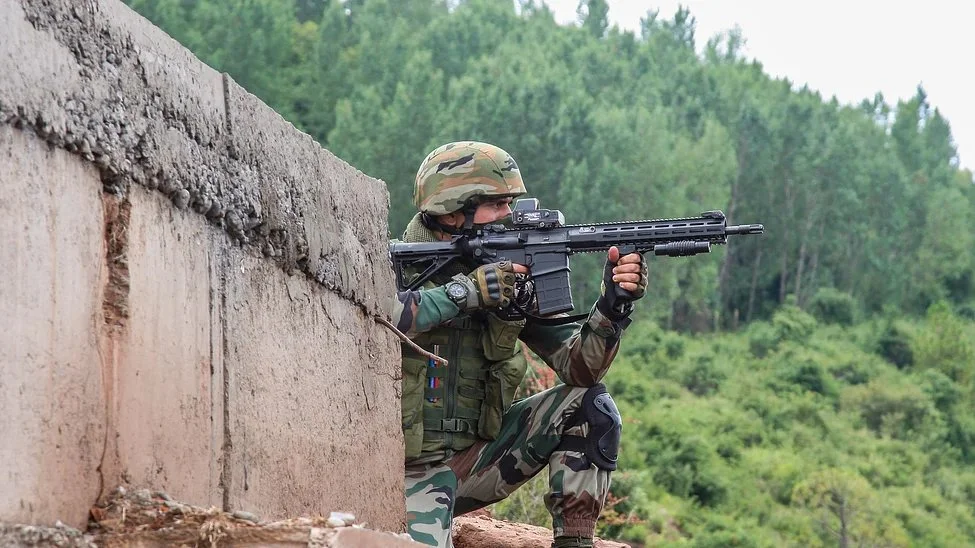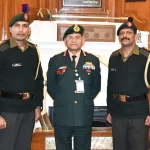The Indian Armed Forces, comprising the Army, Navy, and Air Force, have historically relied on a mix of indigenous, licensed, and imported assault rifles to equip their infantry and special forces units. The evolution of these weapons reflects India’s strategic priorities, including self-reliance through programs like Make in India, while addressing operational needs in diverse terrains such as high-altitude borders, counter-insurgency operations, and urban combat.
From the domestically developed INSAS rifle introduced in the 1990s to recent acquisitions like the AK-203 and SIG 716, the arsenal emphasizes reliability, modularity, and firepower. As of 2025, the forces are transitioning toward modern rifles with enhanced ergonomics and lethality, phasing out older models amid ongoing procurements. This article examines 10 key assault rifles in service, detailing their history, specifications, and roles within the Indian military framework.
1. INSAS Rifle
History and Development
Developed in the mid-1980s by the Armament Research and Development Establishment (ARDE) in Pune, the INSAS (Indian Small Arms System) was designed to replace the licensed L1A1 self-loading rifles. Mass production began in 1997 by the Ordnance Factories Board, incorporating elements from the AKM, FN FAL, and IMI Galil. It entered service in 1998 and saw its first combat deployment during the 1999 Kargil War.
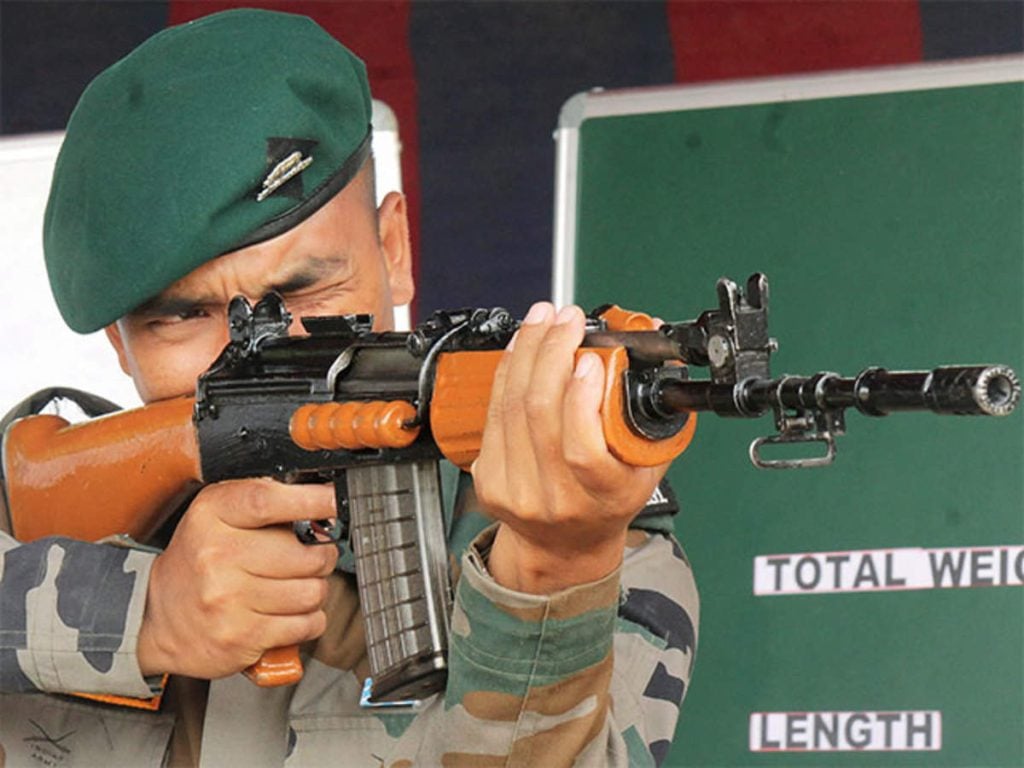
Specifications
- Caliber: 5.56×45mm NATO
- Weight: 4.018 kg (empty)
- Length: 960 mm
- Barrel Length: 464 mm
- Rate of Fire: 600–650 rounds/min
- Effective Range: 400 m
- Feed System: 20- or 30-round detachable box magazine
Usage in Indian Armed Forces
The INSAS has served as the standard infantry rifle for nearly three decades, used extensively in counter-insurgency operations in Jammu and Kashmir and against Maoist insurgents. However, reliability issues, such as jamming in cold weather and unintended firing, have led to its gradual phase-out in favor of newer models like the AK-203. As of 2025, it remains in limited service with reserve units and paramilitary forces.
2. AK-203
History and Development
Part of the AK-200 series developed by Kalashnikov Concern in the 2010s, the AK-203 is a modernized derivative of the AK-74M. India signed a joint venture with Russia in 2019 to produce it locally through Indo-Russia Rifles Private Limited (IRRPL) in Uttar Pradesh, with full technology transfer completed by 2023.
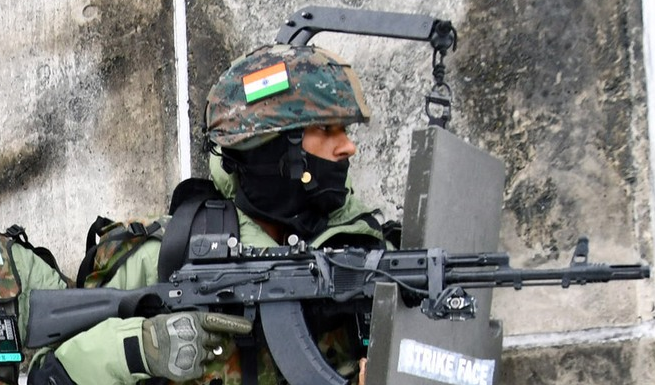
Specifications
- Caliber: 7.62×39mm
- Weight: 3.8 kg
- Length: 880–940 mm (stock extended)
- Barrel Length: 415 mm
- Rate of Fire: 700 rounds/min
- Effective Range: 400–800 m
- Feed System: 30- or 50-round detachable box magazine
Usage in Indian Armed Forces
Adopted as the new standard-issue rifle, over 48,000 units have been delivered by July 2025, with production ramping up to 100,000 annually. It equips frontline infantry, replacing the INSAS, and is valued for its robustness in adverse conditions. Deliveries are projected to reach 70,000 in 2025, supporting counter-terrorism and border security operations.
3. SIG 716i
History and Development
Developed by SIG Sauer in the 2010s as part of the SIG516 family, the SIG 716i is a cost-optimized variant of the SIG 716 battle rifle, featuring a short-stroke piston system. It evolved from efforts to improve upon the HK416, with production shifting toward lighter, modular designs.
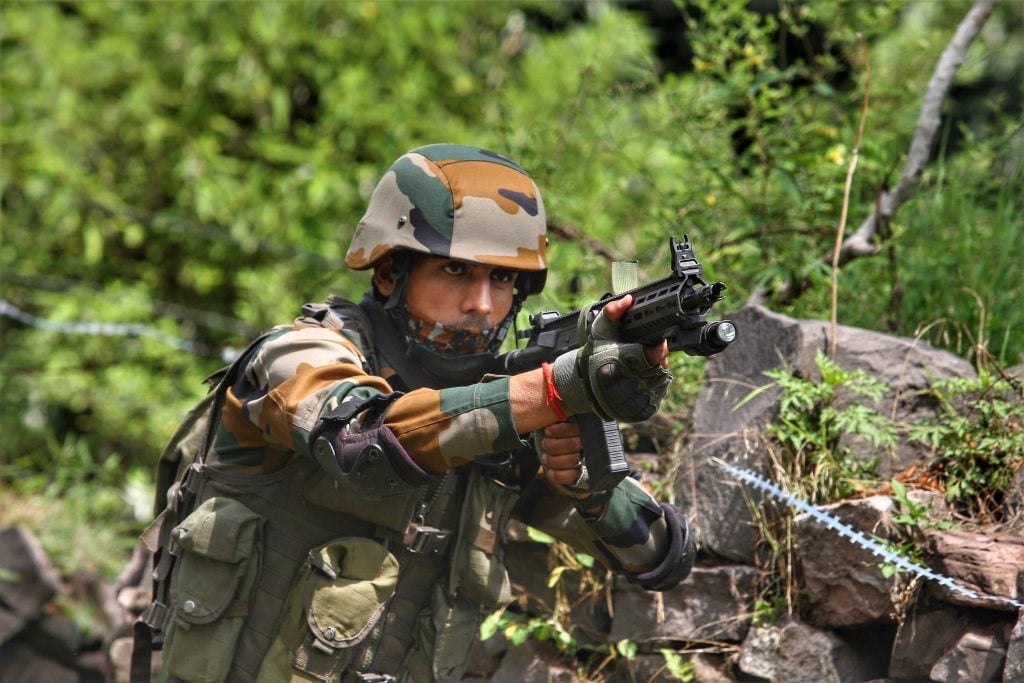
Specifications
- Caliber: 7.62×51mm NATO
- Weight: 3.58 kg
- Length: 965 mm (stock extended)
- Barrel Length: 400 mm
- Rate of Fire: 550–650 rounds/min
- Effective Range: 600 m
- Feed System: 20-round detachable box magazine
Usage in Indian Armed Forces
Procured in large quantities since 2019, with an additional 73,000 ordered in 2024, the SIG 716i serves as a patrol and battle rifle for infantry units, particularly in high-threat environments. Over 145,400 are in service as of 2025, enhancing stopping power in counter-insurgency roles.
4. IWI Tavor TAR-21
History and Development
Designed by Israel Weapon Industries (IWI) in the 1990s, the TAR-21 bullpup rifle was developed to replace the M4A1 in close-quarters combat. It entered Israeli service in 2001 and has been refined through combat feedback, including during Operation Cast Lead in 2009.
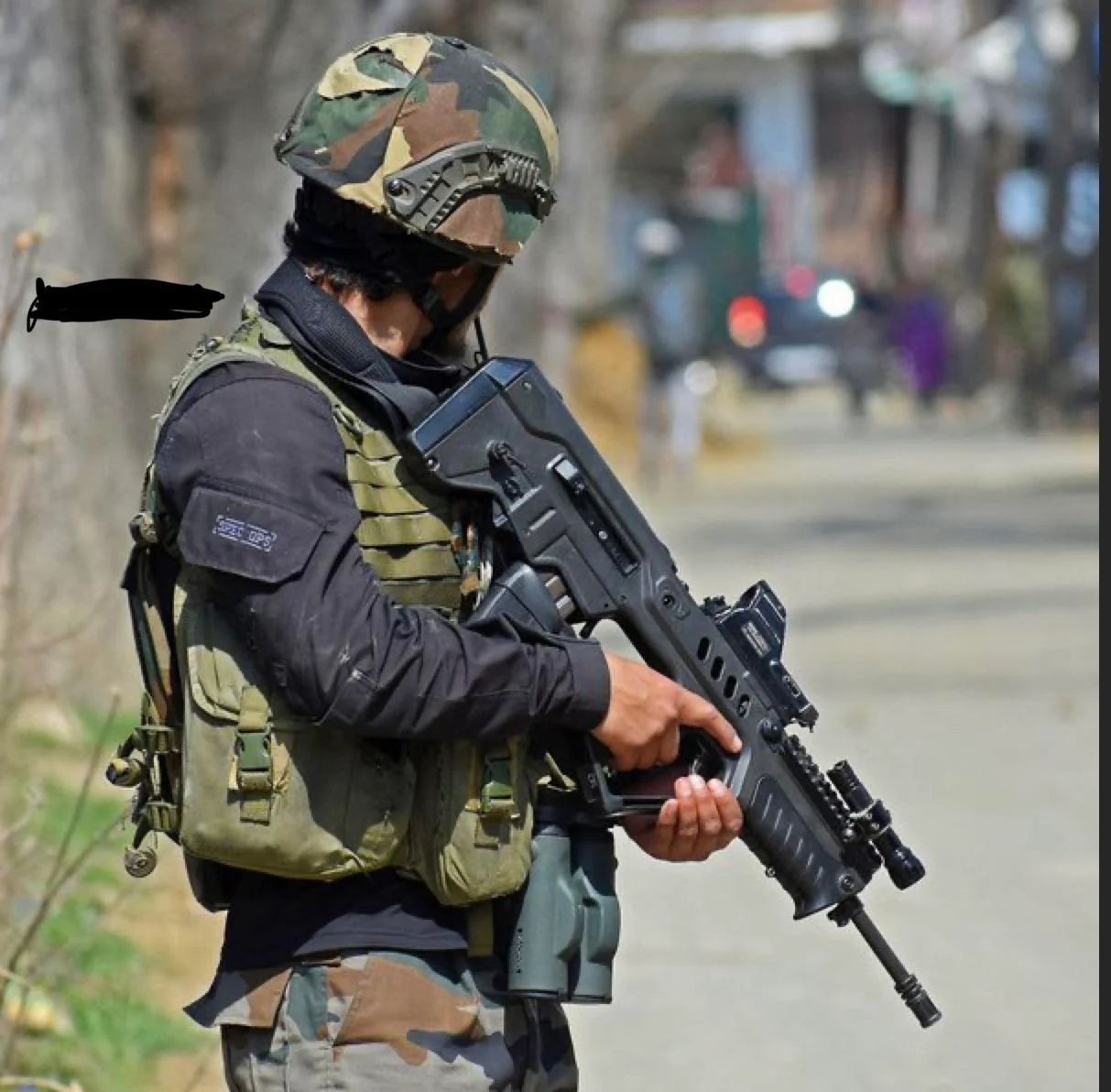
Specifications
- Caliber: 5.56×45mm NATO
- Weight: 3.27 kg
- Length: 720 mm
- Barrel Length: 457 mm
- Rate of Fire: 750–950 rounds/min
- Effective Range: 550 m
- Feed System: 30-round STANAG magazine
Usage in Indian Armed Forces
Primarily used by special forces units like the Para Commandos and MARCOS, the TAR-21 is favored for its compact design in urban and counter-terrorism operations. It remains in active service as of 2025, with variants like the X95 also deployed.
5. M4 Carbine
History and Development
Evolved from the M16A2 in the 1980s by Colt, the M4 was formalized in 1994 as a compact carbine. It has undergone over 90 modifications, including the M4A1 variant with full-automatic capability, and is part of ongoing replacement efforts like the NGSW program.
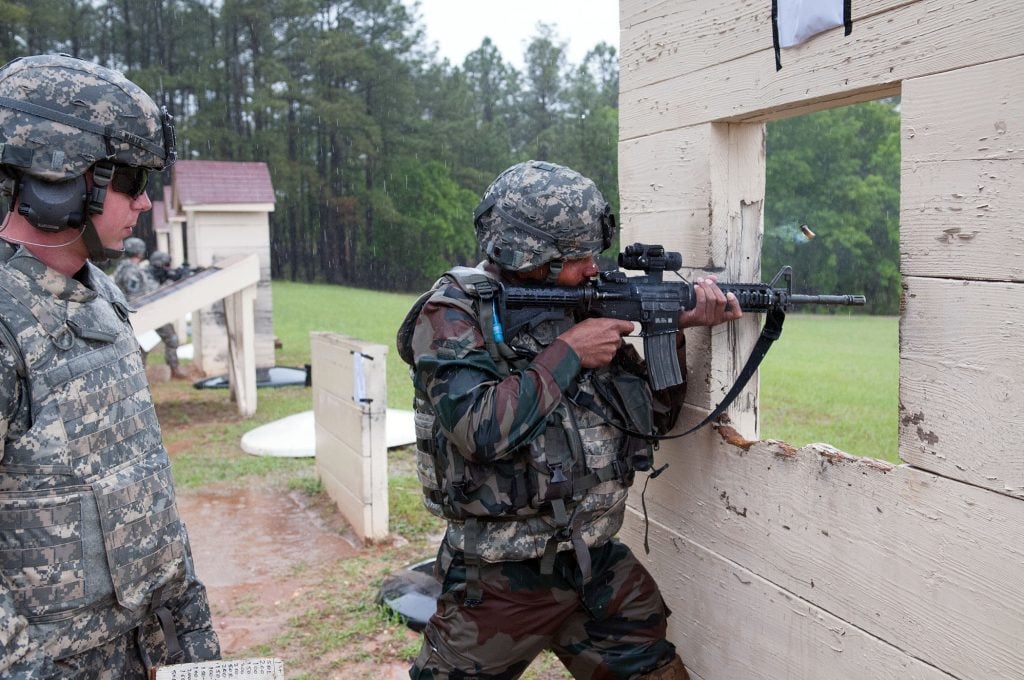
Specifications
- Caliber: 5.56×45mm NATO
- Weight: 2.92 kg (empty)
- Length: 838 mm (stock extended)
- Barrel Length: 368 mm
- Rate of Fire: 700–970 rounds/min
- Effective Range: 500 m
- Feed System: 30-round STANAG magazine
Usage in Indian Armed Forces
Employed by special forces for its modularity and reliability, the M4 is used in operations in Jammu and Kashmir and international missions. As of 2025, it continues to support elite units amid transitions to newer systems.
6. AK-103
History and Development
Introduced in 1993 by Kalashnikov as part of the AK-100 series, the AK-103 is a modernized AK-74M chambered for 7.62×39mm, featuring plastic components for reduced weight. Over 250,000 units have been produced since 1994.
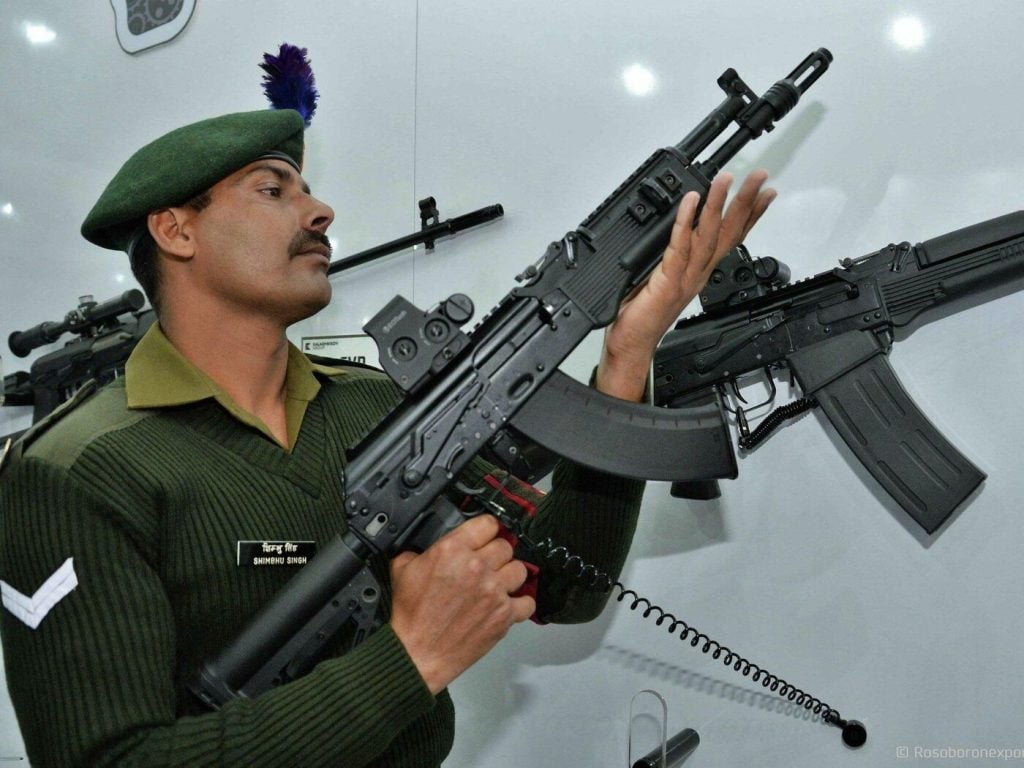
Specifications
- Caliber: 7.62×39mm
- Weight: 3.6 kg (empty)
- Length: 943 mm (stock extended)
- Barrel Length: 415 mm
- Rate of Fire: 600 rounds/min
- Effective Range: 500 m
- Feed System: 30-round detachable box magazine
Usage in Indian Armed Forces
Acquired in 2021 for the Air Force and special forces, the AK-103 supports counter-insurgency and is integrated into Army units. It remains operational in 2025, complementing the AK-203 rollout.
7. FN SCAR-L
History and Development
Developed by FN Herstal in 2004 for U.S. SOCOM, the SCAR family emphasizes modularity. The SCAR-L (light) variant was issued in 2009 but saw limited U.S. adoption; it has been exported to over 20 countries.
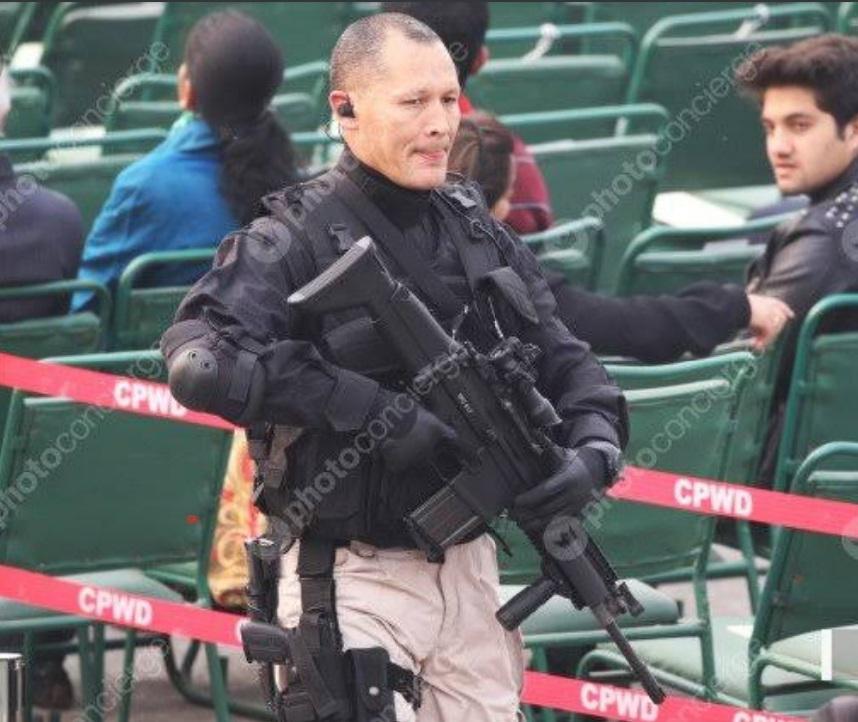
Specifications
- Caliber: 5.56×45mm NATO
- Weight: 3.29 kg
- Length: 889 mm (stock extended)
- Barrel Length: 355 mm
- Rate of Fire: 550–650 rounds/min
- Effective Range: 500 m
- Feed System: STANAG magazines
Usage in Indian Armed Forces
Utilized by special forces for its versatility, the SCAR-L is deployed in precision operations. As of 2025, it supports elite teams in high-risk environments.
8. AKM
History and Development
Introduced in 1959 as a lighter successor to the AK-47, the AKM features stamped steel construction for mass production. Over 10 million units were built, influencing global rifle designs.
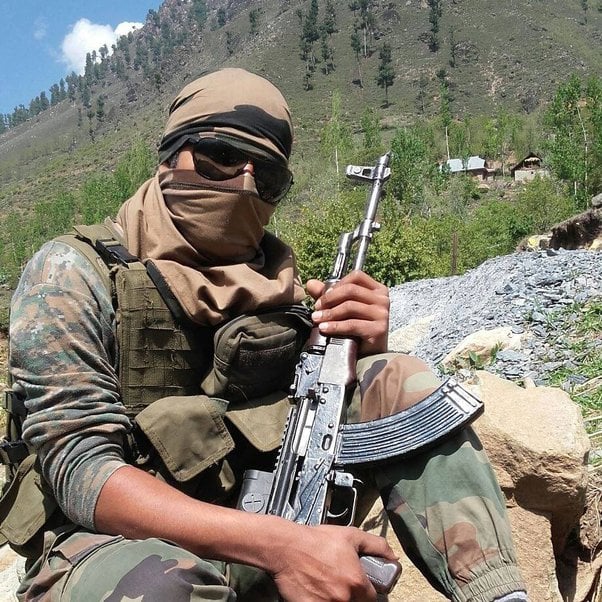
Specifications
- Caliber: 7.62×39mm
- Weight: 3.3 kg
- Length: 880 mm
- Barrel Length: 415 mm
- Rate of Fire: 600 rounds/min
- Effective Range: 300 m
- Feed System: 30-round detachable box magazine
Usage in Indian Armed Forces
Variants are used by various units, including paramilitary, for their durability in rugged terrains. In 2025, it persists in secondary roles amid modernization.
9. Ghatak Assault Rifle
History and Development
Developed by Rifle Factory Ishapore in the 2010s, the Ghatak is an indigenous AKM-based rifle for counter-insurgency. It incorporates modern rails and a folding stock, finalized by 2017.
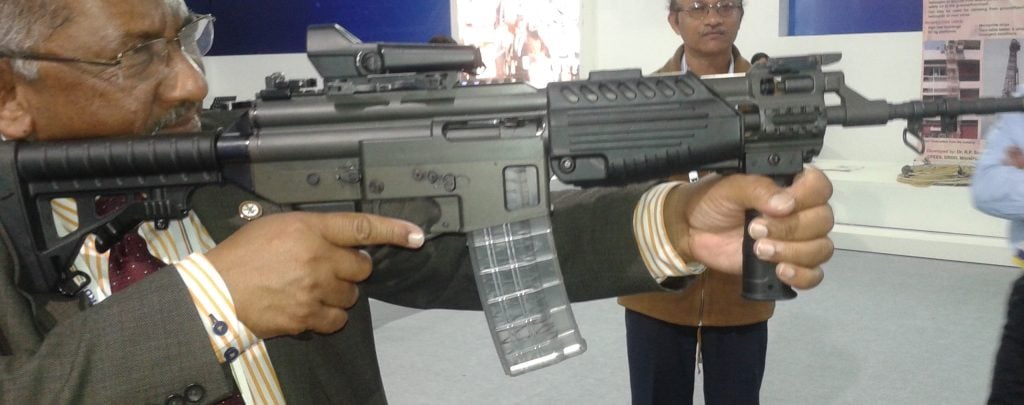
Specifications
- Caliber: 7.62×39mm
- Weight: 3.6 kg
- Length: 890 mm
- Barrel Length: 414 mm
- Rate of Fire: 600 rounds/min
- Effective Range: 300 m
- Feed System: 30-round detachable box magazine
Usage in Indian Armed Forces
Ideal for close-quarters and insurgency operations, the Ghatak equips specialized units. As of 2025, it supports regional security forces with ongoing production.
10. Excalibur Rifle
History and Development
Derived from the INSAS in 2004 by ARDE, the Excalibur addressed reliability issues with improved ergonomics. Prototypes were tested by 2015, but it was rejected as a standard rifle in 2017.
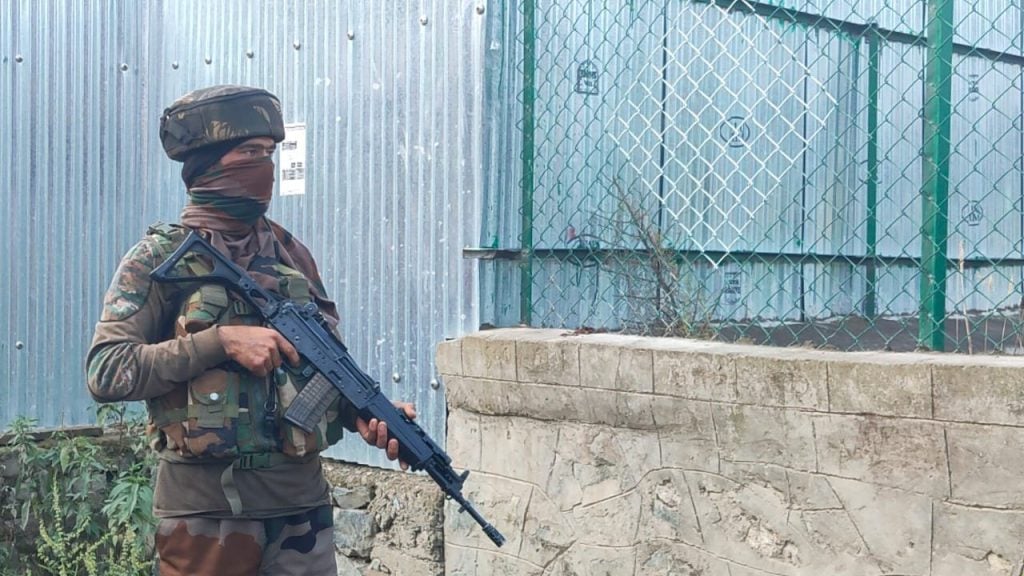
Specifications
- Caliber: 5.56×45mm NATO
- Weight: 3.81 kg (empty)
- Length: 895 mm
- Barrel Length: 400 mm
- Rate of Fire: 650–700 rounds/min
- Effective Range: 450 m
- Feed System: 20- or 30-round detachable box magazine
Usage in Indian Armed Forces
Adopted interimly by the Army and used by police forces like Assam and Karnataka for security duties. In 2025, it serves in limited capacities while newer rifles dominate.

